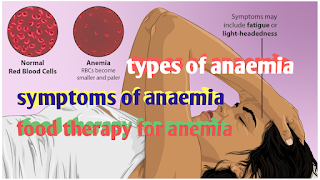Symptoms of tuberculosis
Tuberculosis (TB) is an infectious disease caused by the bacterium Mycobacterium tuberculosis. It typically affects the lungs but can also involve other organs. Symptoms of TB may include---
1. Cough
A persistent cough that lasts three or more weeks is a common symptom of TB. The cough may produce a small amount of bloody mucus.
2. Chest pain
Chest pain, particularly when coughing or deep breathing, is another common symptom of pulmonary tuberculosis.
3. Fatigue and weakness
Many people with TB feel extremely tired and weak due to the infection's effects on the body.
4. Weight loss
Unexplained weight loss can be a symptom of TB, as the infection can cause poor appetite and reduced nutrient absorption.
5. Night sweats
Excessive sweating, particularly while sleeping, can be a symptom of TB. The sweating may occur without any other cause for warmth.
6. Shortness of breath
Difficulty breathing or shortness of breath can occur as the infection affects lung function.
7. Persistent cough with mucus
A cough that produces mucus, especially first thing in the morning, is a common symptom of TB.
8. Chest pain when taking deep breaths
Pain or discomfort in the chest upon deep breathing, known as pleuritic chest pain, can indicate TB.
9. Hemoptysis
Spitting up blood due to coughing is a possible symptom of pulmonary tuberculosis.
10. General feeling of ill health
Many people with TB may feel unwell, have little energy, or experience a fever.
These symptoms can be non-specific and mimic other conditions. If you experience any of these symptoms for an extended period or they worsen over time, consult a healthcare professional for evaluation. Early diagnosis and treatment of TB are crucial to prevent complications and reduce the risk of spreading the disease to others.
Causes of tuberculosis
Tuberculosis (TB) is primarily caused by the bacteria Mycobacterium tuberculosis. Factors that can contribute to the development of TB include
1. weakened immune system
A person with a weakened immune system due to another illness or condition, such as HIV/AIDS, is more vulnerable to developing TB.
2. Poor living conditions
Crowded living spaces, especially in lower-income communities, may facilitate the spread of TB.
3. Malnutrition
Deficiencies in nutrients, like Vitamin D, can weaken a person's immune system and make them more susceptible to TB.
4. Inhalation of infected respiratory secretions
Transmission of TB occurs when a person breathes in tiny droplets containing the bacteria. This usually happens during close contact with someone already infected with TB.
5. Long-term exposure to someone with TB
Someone with active TB disease can transmit the bacteria to others around them, increasing the risk of infection.
6. Underlying health conditions
Chronic illnesses, such as diabetes, kidney disease, or immunosuppressive conditions, can weaken the immune system and increase the risk of TB.
7. Alcohol abuse
Alcohol weakens the immune system and impairs the body's defenses against M. tuberculosis.
8. Aging
The risk of developing TB increases as a person ages.
It is essential to note that not everyone with an M. tuberculosis infection will develop active TB disease. Many people remain asymptomatic or have a milder form known as latent TB. Furthermore, advances in medical treatments and vaccines, like the Bacillus Calmette-Guérin (BCG) vaccine, have been developed to help prevent and treat TB. Nonetheless, global efforts continue to eliminate TB and improve the overall health of affected communities.
Naturopathy treatment of tuberculosis
Naturopathy is a form of alternative medicine that emphasizes the healing power of nature. While naturopathy can offer various therapies and treatments to support the immune system, it's not a substitute for conventional medical treatments for tuberculosis (TB). In fact, if you have tuberculosis, it's crucial to follow your healthcare provider's prescribed course of treatment, which will typically involve antibiotics, such as isoniazid, rifampicin, and/or pyrazinamide.
That said, here are some naturopathic approaches that may be helpful in supporting overall health and improving immune function, which could contribute to the healing process as part of a comprehensive treatment plans
1. Dietary modifications
Focus on eating a nutrient-dense, well-balanced diet. Include plenty of fruits and vegetables, whole grains, lean protein sources, and healthy fats. Avoid processed, high-fat, high-sugar, and alcohol-containing foods and beverages.
2. Probiotics
Promote the growth and activity of beneficial bacteria in the body by taking probiotics, either through supplements or foods like yogurt, kefir, and fermented vegetables.
3. Enhancing immunity
Support the immune system by consuming vitamins and minerals like vitamin C, vitamin D, zinc, and selenium. You can find these nutrients in foods like oranges, fortified milk, oysters, and Brazil nuts, respectively.
4. Exercise
Engage in regular physical activity, such as walking, jogging, swimming, or weight training, as it can help boost the immune system and improve overall well-being.
5. Mind-body connection
Stress can weaken the immune system. Practice stress reduction techniques, such as meditation, yoga, deep breathing, or guided imagery.
6. Herbals
Speak with a naturopathic doctor about the potential use of herbal medicine. Some herbs that may be beneficial, but should be used only under professional guidance, include Echinacea, Gentian, and Rhodiola.
Remember to consult with your healthcare provider and a naturopathic doctor before starting any new treatments or therapies to ensure that they are safe and appropriate for your needs. It's essential to have a strong partnership between you, your medical doctor, and any complementary and alternative medicine practitioners involved in your care. Don't rely solely on naturopathic treatment for tuberculosis; always follow the prescribed course of medical treatment provided by your healthcare provider.










